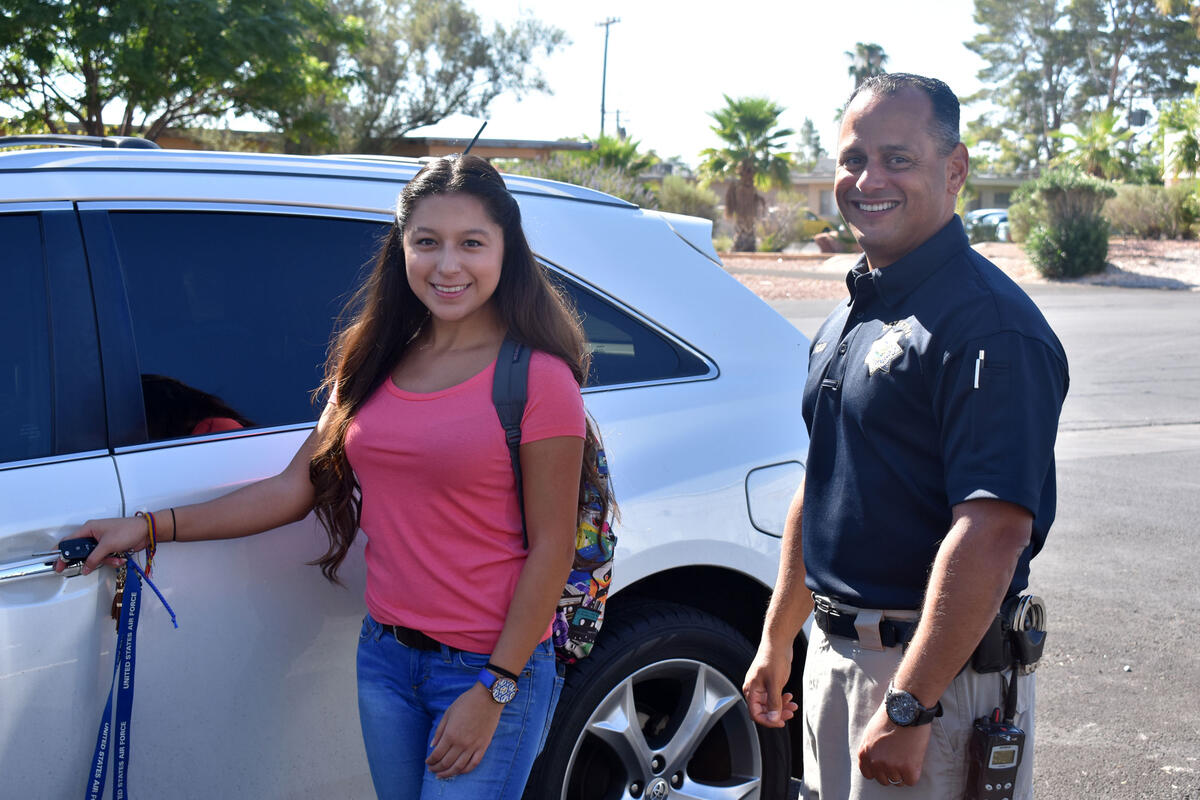
Personal Safety on Campus
Nighttime Personal Safety Tips
- When possible, avoid walking alone. Walk with someone or walk in areas where other people are nearby.
- Stay in well-lit areas away from alleys, bushes, and entryways.
- Avoid shortcuts through parks, vacant lots, and other deserted places.
- Don’t hitchhike or accept rides from strangers.
- If a driver stops to ask you for directions, avoid getting near the car.
- If you are being followed, go to the nearest business or residence for help.
- If you are harassed by the occupant(s) of a car, simply turn and walk in the other direction. The driver will have to turn around to follow you.
- Hold your backpack and/or purse close, not dangling, and avoid carrying extra money or valuables on your person.
- When you return home, have your door key ready so that you can enter without delay.
- Above all, be aware of the people around you and always try to be cognizant of your environment.
- If you're walking alone, you can also send your location via GPS from the Friend Walk section of the RebelSAFE app.

Campus Safety Services
- In partnership with CSUN, Rebel Rides evening golf cart shuttle services are available on UNLV’s Maryland Parkways campus. To request a ride contact University Police Dispatch at 702-895-3668 or use the RebelSAFE App.
- University Police Services provides and monitors a network of emergency call boxes for the university, which are located throughout campus and are illuminated with blue lights for easier viewing at night. In the event of an emergency, calls from these boxes will directly connect you to the University Police Dispatch Center. Please refer to the Maryland Parkway Campus and Shadow Lane Campus maps for emergency call box locations. You can also connect with Police Services Dispatch directly from the RebelSAFE app.
- Motorist assistance is primarily offered through Parking & Transportation Services to motorists on UNLV’s main campus. However, University Police Services assists with these services when the Parking & Transportation Services’ office is closed. Contact Parking & Transportation Services at 702-895-1300 during business hours (Monday-Thursday, 7 a.m. - 7 p.m., and Friday, 7 a.m. - 1 p.m.) or police dispatch after hours at 702-895-3668, for motorist assistance.

In 2017, 5,984 pedestrians were killed, with 75% of those deaths occurring after dark. An additional 31,474 were injured in traffic crashes. The number of pedestrian deaths has increased by 27 percent over the last ten years. On average, a pedestrian was killed every two hours and injured every seven minutes, and an additional 66,000 were injured in traffic crashes. Your campus is not immune to this problem; in fact, it is a particular challenge along Maryland Parkway on the way to campus. What can you do to avoid becoming a statistic?
Tips for Pedestrians
- Always cross at marked crosswalks and wear reflective clothing when walking at night.
- Do not cross in the middle of the street or between parked cars.
- Obey any pedestrian signals and look both ways. Never run or dash into the street.
- Look before walking past stopped vehicles. Do not cross just because a driver waves you on.
- Make eye contact with drivers and watch out for traffic as you cross. Avoid texting while crossing the street.
- Use sidewalks where provided. Where no sidewalks are provided, it is usually safer to walk facing road traffic.
Tips for Bicyclists
- Yield to pedestrians.
- Remember, bicyclists are not considered pedestrians unless they are walking their bikes. Otherwise, they are considered vehicles and forfeit their rights as pedestrians in the case of an accident or citation.
- Use marked bike paths or multi-use paths when available.
- Use extra caution as you transition between bike paths, roads, and sidewalks. Be aware that your actions are unpredictable to drivers and pedestrians.
Tips for Drivers
- Yield to pedestrians in crosswalks and at intersections.
- Be alert for bicyclists and skateboarders. They approach more swiftly than pedestrians.
- Never pass another vehicle that has stopped or is slowing down at a crosswalk.
- When you stop for a pedestrian, stop far enough back so that other drivers can also stop in time.
- Stop for a pedestrian in a crosswalk when the pedestrian is crossing on your half of the road.
RebelSAFE Mobile App
RebelSAFE is the official mobile safety app of UNLV. Among the many features of the app to help keep the campus community safe, users can send their location via GPS to a friend if they are walking alone. They will be able to track your position and be notified when you've reached your destination safely. To download the free app, visit iTunes or the Google Play Store.
Drivers Beware! Did You Realize...
Alcohol and drugs can impair an individual's ability to walk safely just like they do a person's ability to drive safely. In fact, alcohol consumption by either the driver or the pedestrian was reported in 47% of all pedestrian fatalities, and contrary to popular belief, pedestrians were more likely to be drunk than drivers in these incidents. Of the pedestrians involved in such incidents, 33% had a blood alcohol concentration (BAC) of .08 or higher. Of the drivers involved in fatal crashes, only 7% had a BAC of .08 or higher (less than one-third the rate for the pedestrians).
Know the Signs
- If the intersection has a pedestrian signal, press the button and wait for the signal’s "walk" indicator.
- A flashing "don't walk" signal means you should not start crossing the roadway. Pedestrians who have partially completed their crossing should finish crossing or proceed to a safety island.
- A steadily illuminated "don't walk" indicator means it is not safe to enter the roadway.
- Obey any and all pedestrian signals and always cross at marked crosswalks whenever possible.